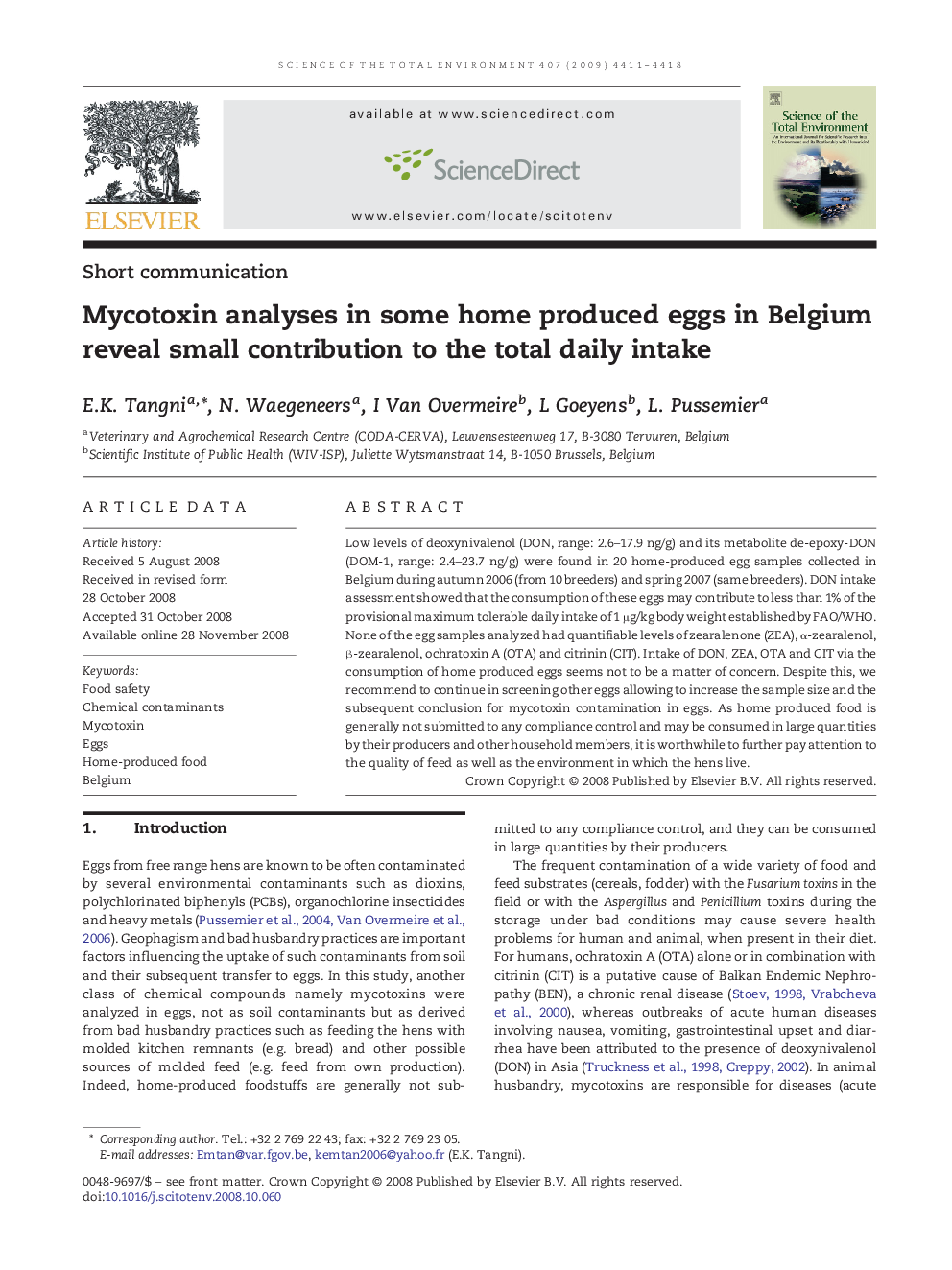| Article ID | Journal | Published Year | Pages | File Type |
|---|---|---|---|---|
| 4431057 | Science of The Total Environment | 2009 | 8 Pages |
Low levels of deoxynivalenol (DON, range: 2.6–17.9 ng/g) and its metabolite de-epoxy-DON (DOM-1, range: 2.4–23.7 ng/g) were found in 20 home-produced egg samples collected in Belgium during autumn 2006 (from 10 breeders) and spring 2007 (same breeders). DON intake assessment showed that the consumption of these eggs may contribute to less than 1% of the provisional maximum tolerable daily intake of 1 μg/kg body weight established by FAO/WHO. None of the egg samples analyzed had quantifiable levels of zearalenone (ZEA), α-zearalenol, β-zearalenol, ochratoxin A (OTA) and citrinin (CIT). Intake of DON, ZEA, OTA and CIT via the consumption of home produced eggs seems not to be a matter of concern. Despite this, we recommend to continue in screening other eggs allowing to increase the sample size and the subsequent conclusion for mycotoxin contamination in eggs. As home produced food is generally not submitted to any compliance control and may be consumed in large quantities by their producers and other household members, it is worthwhile to further pay attention to the quality of feed as well as the environment in which the hens live.
